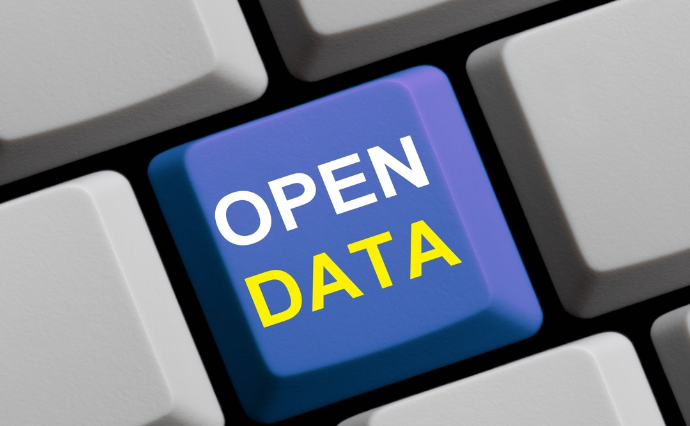
Open Government Data in Public Health: Progress, Challenges, and Opportunities
The ability to predict and contain the next global health crisis before it even begins.
Policies that not only meet the needs of today but anticipate the challenges of tomorrow.
This is the promise of open government data (OGD) in the health sector—a vision where transparency, collaboration, and innovation converge to create more resilient health systems.
But as a recent systematic review reveals, we’re still far from realizing this potential.
The Untapped Potential of Open Government Data
Open government health data serves as a critical tool for addressing public health challenges. By making data accessible, machine-readable, and free to use, OGD enables governments, researchers, and communities to better understand health trends, risk factors, and resource needs. Whether it’s identifying early warnings for pandemics, supporting personalized medicine, or driving innovative solutions, OGD can transform how public health decisions are made.
Yet, despite the enormous potential, the review uncovered a sobering reality: only a handful of initiatives worldwide effectively leverage OGD in health. The findings paint a picture of a fragmented landscape where data formats lack standardization, quality is inconsistent, and access remains uneven across regions.
Why Open Data Matters
The COVID-19 pandemic demonstrated the power of open data to save lives. Governments and researchers used publicly available datasets to track outbreaks, model disease spread, and allocate resources. For instance, dashboards tracking case numbers and vaccination rates became household tools during the crisis. However, the review highlights that these successes are the exception, not the norm.
Take the case of Latin America, where significant disparities in data quality were identified. Metrics like “invalid characters” and “incomplete data” plagued nearly half of the datasets analyzed. Similarly, in Italy, researchers found that one-third of regional portals lacked any COVID-related data, despite public claims to the contrary. These gaps in transparency undermine public trust and limit the ability to respond effectively to health crises.
Barriers to Progress
Why has OGD not reached its full potential? The review identifies several barriers:
- Lack of Standardization: Without uniform guidelines, datasets vary widely in format and usability. This makes it difficult to integrate data from different sources or use it for global analyses.
- Data Quality Issues: Many datasets are incomplete, poorly formatted, or lack metadata, reducing their reliability and reusability.
- Geographic Inequities: High-income regions tend to have more robust OGD initiatives, while low- and middle-income countries often struggle with the resources and infrastructure needed to implement them.
- Ethical and Legal Challenges: Balancing transparency with data privacy is a complex task. Ensuring that sensitive health information is anonymized yet useful remains a major hurdle.
A Path Forward: Learning from Successes
While the challenges are significant, the review also highlights promising examples that can serve as blueprints for future efforts. For instance:
- Frameworks for Data Quality: In China, the U.S., and the European Union, researchers developed a framework for assessing the usability of COVID-19 datasets. This approach combined expert input with systematic evaluation, offering a model for other regions to follow.
- Innovative Tools: The HEVDA tool in Latin America provides a structured way to validate open health data, highlighting areas for improvement while ensuring accountability.
- Cross-Sector Collaboration: Successful initiatives often involve partnerships between governments, academia, and civil society. These collaborations ensure that diverse perspectives shape how data is collected, shared, and used.
What’s Next?
To fully harness the potential of OGD, the public health community must address its current limitations head-on. Here’s what needs to happen:
- Adopt International Standards: Establishing global guidelines for data publication will improve interoperability and ensure that datasets are consistently high-quality.
- Invest in Capacity Building: Governments, especially in resource-limited settings, need support to develop the technical and organizational capacity required for effective OGD initiatives.
- Foster a Culture of Transparency: Beyond technical fixes, a cultural shift is needed to prioritize openness and accountability in public health governance.
- Balance Privacy with Utility: Clear legal frameworks and advanced anonymization techniques can help ensure that data sharing respects individual privacy while remaining actionable.
Join the Conversation
Open government data holds the key to a healthier, more equitable future, but achieving that vision will require collective action. How can your organization leverage OGD to address pressing public health challenges? What steps can governments take to ensure that open data is both accessible and reliable? And how do we balance the need for transparency with the imperative to protect privacy?
We’d love to hear your thoughts. Share your ideas, experiences, or questions in the comments or on social media. Together, we can unlock the full potential of open data to transform public health.
Act Now – Transform Public Health Today!
Don’t wait—join the movement shaping the future of public health. Subscribe for free to get weekly, expert-curated insights and actionable updates.
⚡ Time is critical! Share this blog now and inspire others to be part of this essential mission.



